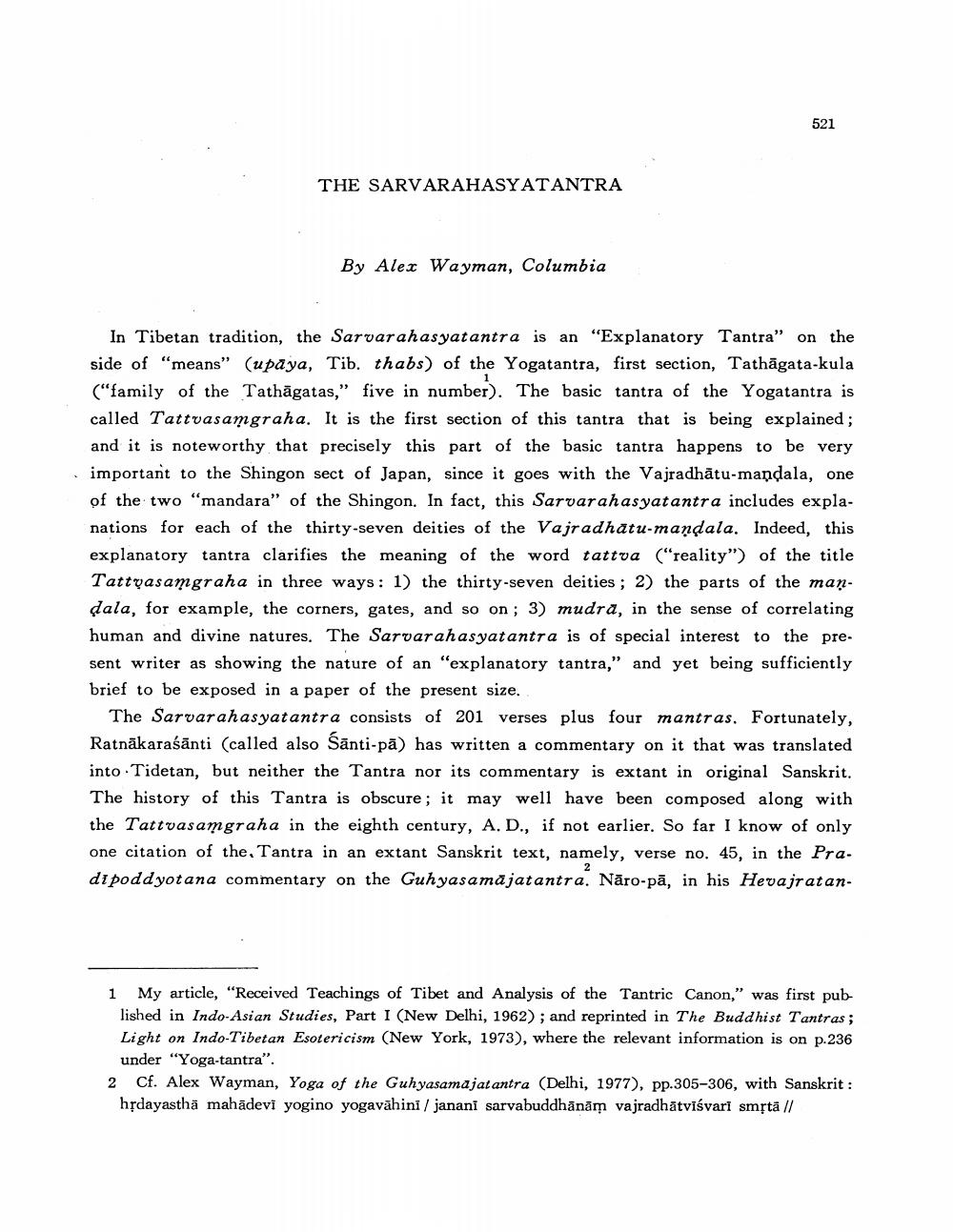________________
521
THE SARVARAHASYATANTRA
By Alex Wayman, Columbia
In Tibetan tradition, the Sarvarahasyatantra is an "Explanatory Tantra" on the side of "means" (upaya, Tib. thabs) of the Yogatantra, first section, Tathāgata-kula ("family of the Tathāgatas," five in number). The basic tantra of the Yogatantra is called Tattvasamgraha. It is the first section of this tantra that is being explained; and it is noteworthy that precisely this part of the basic tantra happens to be very important to the Shingon sect of Japan, since it goes with the Vajradhātu-mandala, one of the two "mandara" of the Shingon. In fact, this Sarvarahasyatantra includes explanations for each of the thirty-seven deities of the Vajradhātu-mandala. Indeed, this explanatory tantra clarifies the meaning of the word tattva ("reality") of the title Tattyasamgraha in three ways: 1) the thirty-seven deities; 2) the parts of the mandala, for example, the corners, gates, and so on; 3) mudra, in the sense of correlating human and divine natures. The Sarvarahasyatantra is of special interest to the present writer as showing the nature of an "explanatory tantra," and yet being sufficiently brief to be exposed in a paper of the present size.
The Sarvarahasyatantra consists of 201 verses plus four mantras. Fortunately, Ratnākaraśānti (called also Sānti-pā) has written a commentary on it that was translated into · Tidetan, but neither the Tantra nor its commentary is extant in original Sanskrit. The history of this Tantra is obscure; it may well have been composed along with the Tattvasamgraha in the eighth century, A. D., if not earlier. So far I know of only one citation of the, Tantra in an extant Sanskrit text, namely, verse no. 45, in the Pra. di poddyotana commentary on the Guhyasamājatantra. Näro-pā, in his Hevajratan
1 My article, "Received Teachings of Tibet and Analysis of the Tantric Canon," was first pub lished in Indo-Asian Studies, Part I (New Delhi, 1962); and reprinted in The Buddhist Tantras; Light on Indo-Tibetan Esotericism (New York, 1973), where the relevant information is on p.236
under "Yoga-tantra". 2 Cf. Alex Wayman, Yoga of the Guhyasamajat antra (Delhi, 1977), pp.305-306, with Sanskrit : hțdayasthā mahādevi yogino yogavāhini / janani sarvabuddhānām vajradhātvisvarī smộtā //




